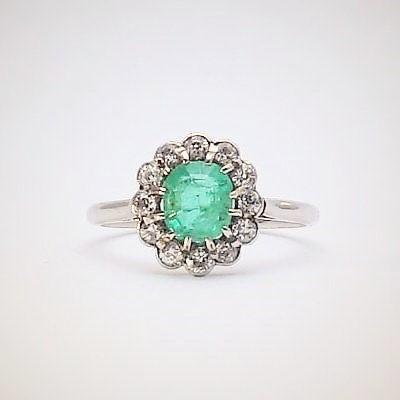What is an Emerald?
What is an emerald? An emerald is a gemstone and a variety of the mineral beryl, coloured green by trace amounts of chromium and sometimes vanadium. The emerald has a hardness of 7.5–8 on the Moh’s scale. Most emeralds have inclusions which make the stone vulnerable to breakage.
Colour
In geology, colour is decided by hue, tone, and saturation. Emeralds occur in hues ranging from yellow-green to blue-green, with the primary hue being green. Yellow and blue are the normal secondary hues found in emeralds. Only gems that are medium to dark in tone are considered emeralds, the lighter toned gems are known by the name green beryl. The finest emeralds are approximately 75% tone on a scale where 0% tone is colourless and 100% is opaque black.
Clarity
Emeralds tend to have numerous inclusions and surface imperfections. Stones without fissures and inclusions are extremely rare and therefore almost all emeralds are treated to enhance the clarity. Imperfections are unique for each emerald and can be used to identify a particular stone.
Treatments
Most emeralds are oiled in order to fill in surface reaching cracks to improve the clarity and strength. These treatments are typically applied in a vacuum chamber under a mild heat, to open the pores of the stone and allow the oil to be absorbed more effectively. Oil treated emeralds are worth much less than untreated emeralds of similar quality. Gems are graded on a four-step scale; none, minor, moderate and highly. These categories reflect levels of enhancement.
Mining
Emeralds can be found all over the world in countries such as Afghanistan, Australia, Austria, Brazil, Bulgaria, Cambodia, Canada, China, Columbia, Egypt, Ethiopia, France, Germany, India, Italy, Kazakhstan, Madagascar, Mozambique, Namibia, Nigeria, Norway, Pakistan, Russia, Somalia, South Africa, Spain, Switzerland, Tanzania , the United States, Zambia, and Zimbabwe. Columbia is by far the world's largest producer of emeralds, constituting 50–95% of the world production.





